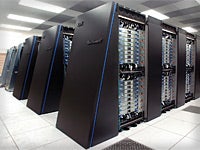The latest semi-annual list of the world’s top 500 supercomputers was released on November 14, showing little change at the top of the list. The China-based Sunway TaihuLight supercomputer, which first claimed the title of the world’s fastest system in June 2016, still reigns supreme.
Sunway TaihuLight was built by the National Research Center of Parallel Computer Engineering and  Technology (NRCPC), and it is installed at the National Supercomputing Center in Wuxi, China. Tianhe-2, which was the top supercomputer in the world from June 2013 to June 2016, once again came in second with its score of 33.86 petaflops.
Technology (NRCPC), and it is installed at the National Supercomputing Center in Wuxi, China. Tianhe-2, which was the top supercomputer in the world from June 2013 to June 2016, once again came in second with its score of 33.86 petaflops.
In terms of overall standings, the U.S and China now have 171 systems each on the Top500 supercomputer list, accounting for two-thirds of all supercomputers in the world.
The June 2016 standings are somewhat of a reversal for the U.S from the June 2015 top500 list, when there were only 108 supercomputers in China and 200 in the U.S.
Overall, the supercomputing landscape is getting faster each year, with the current entry-level system on the top 500 list coming in at 349.3 teraflops, up from the entry level of 206.3 teraflops in November 2015. The total performance of all 500 computers on the list is now 672 petaflops, a 60 percent increase from a year ago.
In terms of system architecture components, Intel dominates the list with 462 out 500 systems. Hewlett Packard Enterprise (HPE), inclusive of its recent acquisition of SGI, is the top systems vendor with 140 supercomputers on the list.
The single most pervasive technology component across the top500 supercomputer list, however, is in terms of operating system. Linux is now on 498 of the top 500 supercomputers, or 99.6 percent. In contrast, in November 2015, Linux was on 494 of the top 500. Looking even further back, in November 2010, Linux represented 460 out of the top 50 systems.
Sean Michael Kerner is a senior editor at ServerWatch and InternetNews.com. Follow him on Twitter @TechJournalist

